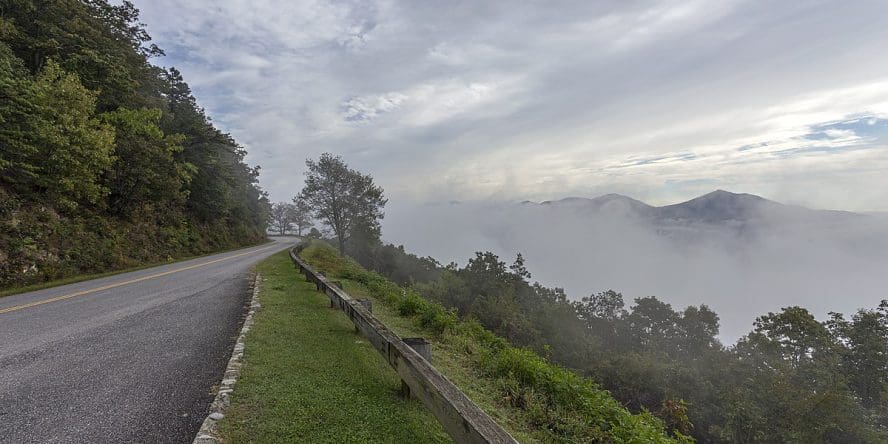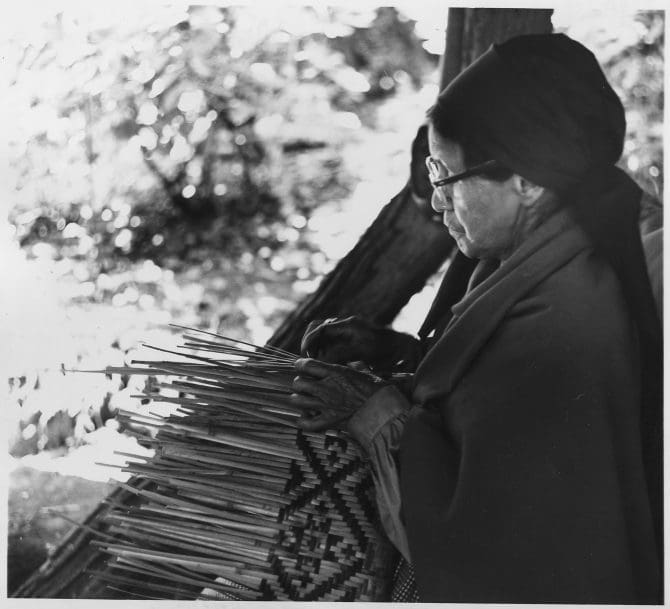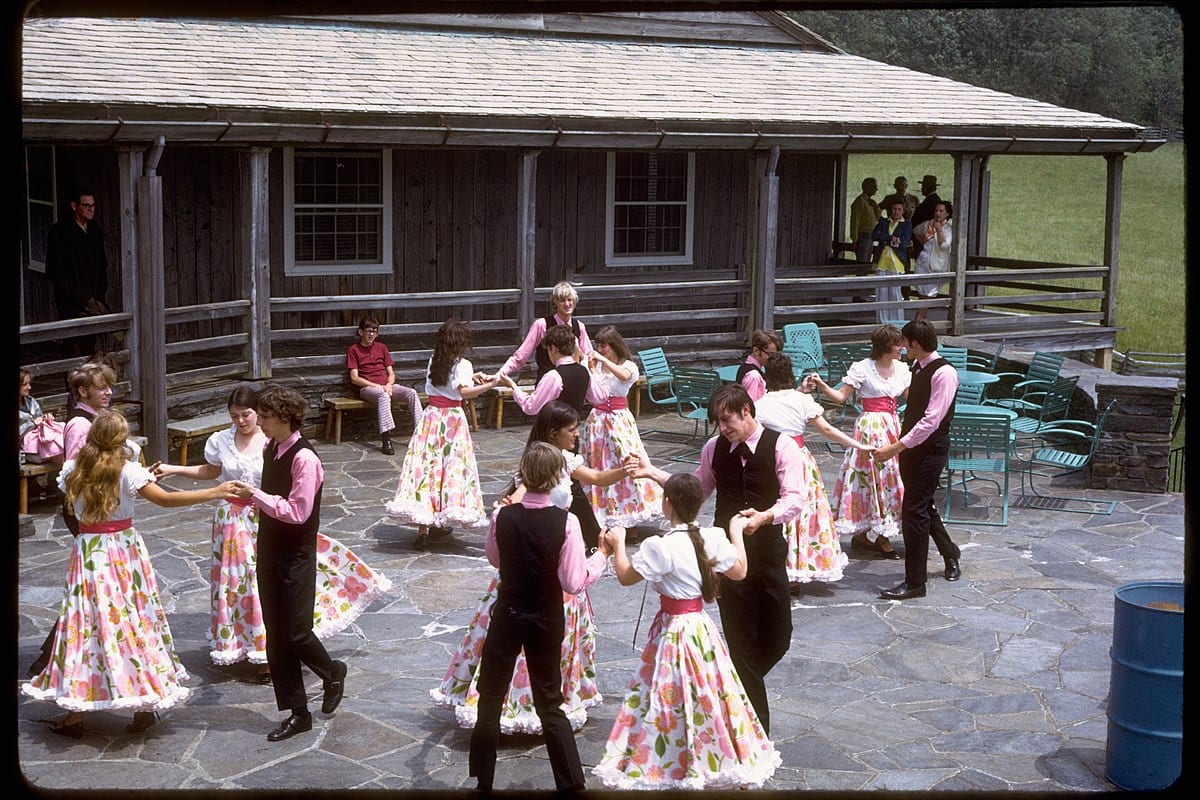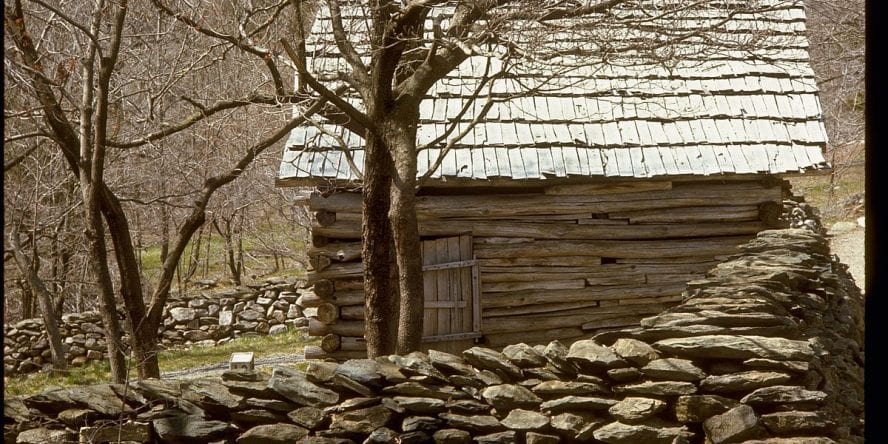In the western parts of Virginia and North Carolina lies the Blue Ridge Parkway,, opens a new window one of the most beautiful national treasures of the United States. The Blue Ridge Parkway is America’s longest linear national park and links Virginia’s Shenandoah National Park, opens a new window with the Great Smoky Mountains National Park, opens a new window to the south in North Carolina and Tennessee. Along the parkway, you’ll see stunning natural landscapes, beautiful forests and rivers and meet people with a history older than the United States. The Blue Ridge is particularly beloved during the summertime, when all of its passages are open for road trips and hikes. This article explores the long and winding history of this great national park.
Ancient Formation: The Origin of the Appalachians
The Appalachian Mountains are one of the world’s oldest mountain chains. They are believed to have formed in a collision, opens a new window of tectonic plates 500 to 300 million years ago, before the time of the dinosaurs. The Appalachians have worn down from millions of years of rain and erosion, and the mountains have become shorter than younger ranges, such as the Rockies in the western United States and the Himalayas in Asia. The Appalachians had been worn down to nearly a flat plain by the end of the Mesozoic, but became uplifted, opens a new window once more around 8 million years ago, when a portion of Earth’s crust underneath the chain broke off and floated upward. The Blue Ridge portion of the Appalachian range is known as the Southern Crystalline Appalachians, opens a new window and are made up of metamorphic, opens a new window and igneous, opens a new window rocks. The Blue Ridge has also been shaped by many rivers that flow from it, especially the Potomac, opens a new window, the James, opens a new window, and the Roanoke, opens a new window. The rivers and their canals are popular tourist destinations on the parkway.
The First People: American Indians and the Appalachians
With a temperate, opens a new window climate and many sources of water, the Blue Ridge has been inhabited by humans for a long time. The earliest inhabitants of the Blue Ridge likely arrived about 11,000, opens a new window years ago after the last Ice Age. Most of the tribes of American Indians that lived in the Blue Ridge were Cherokee, opens a new window people. The Cherokee were a settled people that lived in permanent villages throughout the Blue Ridge and sustained themselves by the “Three Sisters, opens a new window” method of agriculture. By planting corn, beans, and winter squash close together, each plant benefitted as they grew. Some of the fields they grew crops in are still visible, opens a new window at the base of the mountains. Most tribes lived near a river, which provided good land for hunting and fishing. The Cherokee had a matrilineal, opens a new window culture; women owned both the home and the land, and all children inherited their mother’s clan and status.
The first contact between the Cherokee and Europeans occurred in 1540 during Hernando de Soto’s, opens a new window expeditions. Although many Cherokee died from the diseases the Europeans brought, contact between Cherokees and settlers was limited until the late 17th century, when British settlers in Virginia, opens a new window began to enter the Appalachians to trade with them. The Cherokee were granted sovereign borders to their lands and were treated as one of the “Five Civilized Tribes” by George Washington in the early days of American nationhood. Cherokee society changed through contact with the American colonists; the society began to incorporate Western methods of agriculture and industry, and many Cherokee families sent their children to be educated in missionary schools, opens a new window in English. Sequoyah, opens a new window, a Cherokee man who was interested in the American colonists’ communication by writing, developed a distinct Cherokee alphabet, opens a new window to record the language, customs, and culture of his people. Despite the efforts of the Cherokee at cultural assimilation, the settlers still coveted their land, and President Andrew Jackson ordered their removal from their territories and relocation to Oklahoma in what became known as the Trail of Tears, opens a new window. In the southern part of the Blue Ridge in North Carolina, some Cherokee managed to escape or avoid capture, and some later returned from Oklahoma to their ancestral lands. Their descendants live today in Cherokee, North Carolina, opens a new window, and maintain the Oconaluftee Indian Village, opens a new window, a popular site on the North Carolina portion of the Blue Ridge Parkway.
A few other American Indian tribes lived in and around the Blue Ridge. The Monacan, Saponi, and Tutelo Indians were the three most eastern nations of Siouan-speaking people., opens a new window Though they did not speak the same language as the Cherokee,, opens a new window they frequently traded with them and lived a similar way of life, opens a new window centered around the “Three Sisters” crops. Their culture was consistent with that of the other Eastern Woodland peoples, opens a new window and different from the Western Sioux. After a series of conflicts with the British settlers, the Tutelo and Saponi mostly left Virginia by 1740, and moved to New York and later to Canada. The Monacan maintained a presence in Virginia to this day; their tribal offices, opens a new window are located in Amherst County.
The people, their traditions, and their history in the Blue Ridge region.
The Mountain Folk: the Colonists of the Blue Ridge
Settlement of the Blue Ridge by the colonists took a long time and occurred later than in other parts of Virginia. One of the earliest explorations of the area occurred in 1716, when Governor Spotswood of Virginia (and for whom Spotsylvania County was named) led the Knights of the Golden Horseshoe across the Blue Ridge in an expedition, opens a new window that began and ended at the colonial frontier fort called Germanna. The Treaty of Albany, opens a new window, negotiated by Governor Spotswood with the Iroquois in 1722, opened up the lands of the Shenandoah Valley to settlement by colonists in Virginia. Colonists began to push farther into the “western frontier,” then the peak of the Blue Ridge. Most of the initial colonists of the mountains were of Scots-Irish blood, opens a new window; they were descendants of Ulster Protestants who were once supporters of William of Orange, the Protestant King of England and Scotland. It was from their love for “King Billy” that the settlers first received the name “hillbillies.”
Settlement of the Appalachians spread southward from Virginia to east Tennessee, North Carolina, and Georgia. Over time, the original Scots-Irish settlers were joined by other groups. Coming southward from Pennsylvania, German, opens a new window settlers became established in several parts of the Blue Ridge, especially the area around Lexington, opens a new window. Early German immigrants brought with them the Plott Hound, opens a new window, a breed strongly associated with the culture of the Blue Ridge. Scandinavian settlers in the Blue Ridge brought with them the log cabin, opens a new window now associated with mountain living. The mountain settlers lacked the wealth of the Tidewater planters and rarely had the money to keep enslaved people or large farms. An Appalachian culture of self-sufficiency and hard work emerged, becoming so distinct from other parts of Virginia that part of the state split off over the issue of slavery during the Civil War and became West Virginia, opens a new window.
Creating a National Treasure: Establishment of the Blue Ridge Parkway
In the decades following the Civil War, America benefited from rapid industrialization and urbanization, but the beauty of its natural landscape began to be lost. The first American national park to be created was Yellowstone, opens a new window in 1872, but it was far removed from urban centers of the time, and it would take decades for national parks to be set up in the eastern states. The Blue Ridge Parkway began with the authorization of Shenandoah National Park, opens a new window and Great Smoky Mountains National Park, opens a new window in 1925. The parks were created to give access to a wilderness area to populations in the eastern states who could not easily access western parks, such as Yellowstone, and also to provide jobs to people during the Great Depression. State senator Harry Byrd, opens a new window saw the park as a major potential economic benefit to Virginia and began fundraising for the project soon after the authorization. Although the area had been inhabited for some time, its land had been devalued by the chestnut blight, opens a new window and drought of 1930, opens a new window, which made it difficult for many people to harvest chestnuts, peaches, and apples to pay for equipment and supplies.
Acquiring all the land needed for Shenandoah National Park would prove to be a lengthy and controversial process. Many families had lived on the land for generations and did not want to leave or be forced to sell out, especially people near the center of the park’s area. Some resisted the eminent domain, opens a new window orders in court, although they were ultimately unsuccessful. As the process dragged on, the government began to deploy propaganda against those who wished to keep their land. Some newspaper reporters used crude stereotypes, creating a “Dogpatch history,” comparing the mountain folk to characters in the popular comic strip Li’l Abner, opens a new window, and the 1933 sociological study Hollow Folk, opens a new window distorted the living conditions of the settlers. A few elderly people were allowed to remain on the land after the park was established in 1936; the last of them died in 1979, opens a new window.
After Shenandoah National Park was opened, it would still take decades for the Blue Ridge Parkway to be completed. In its early days, much work on the Parkway was done by federal work programs like the Works Progress Administration, opens a new window (WPA). Use of the WPA meant that much of the work on the parkway in Virginia was completed by locals rather than workers hired from elsewhere, and its construction provided jobs for Virginians during the Great Depression. Particularly in the early days, work on the parkway was quite hard and involved a great deal of labor by hand, opens a new window. Construction halted once the US entered World War II. Because of this, only about half of the parkway had been completed by the early 1950s. The WPA had been dissolved in 1943, and the National Park Service had to create a new program called Mission 66, opens a new window to finish the construction of the Blue Ridge Parkway by the targeted deadline of 1966. Mission 66 proved successful in completing almost all of the parkway by the end of 1966. The final section of the parkway, the Linn Cove Viaduct , opens a new windowin North Carolina, would only open in 1987.
As the parkway was completed, some writers from the Blue Ridge communities would begin to tell their stories, offering a more authentic narrative of life in the mountains than the propaganda of earlier days. Perhaps the most well known was Earl Hamner,, opens a new window a screenwriter and author from Schuyler, Virginia. His childhood memories of a Christmas in 1933 when his father had to walk home six miles through snow to the family’s home formed the basis of The Homecoming., opens a new window This novel was later adapted into the pilot film for the popular TV series The Waltons, opens a new window, which ran for nine years during the 1970s and early 80s. The series would spur tourism for the Blue Ridge Parkway, generating interest in both its natural beauty and the culture of its people. A museum, opens a new window dedicated to the series remains in Schuyler today.
Beauty in Our Time: The Parkway’s Legacy
Today’s Blue Ridge Parkway provides stunning beauty to tourists, preserves a beautiful landscape, and provides income to many counties in rural Virginia and North Carolina. The Parkway offers a diverse array of attractions for tourists. Picturesque small towns, opens a new window such as Bedford, opens a new window, Buchanan, opens a new window, and Salem, opens a new window can be visited along the Parkway’s route. Beautiful sites and scenic views can also be seen on the Parkway. One of the most memorable is Mabry Mill, opens a new window, an old gristmill from the early 1900s that allows tourists to see a real gristmill, blacksmith shop, and sawmill restored to be as they appeared over 100 years ago. At the Johnson Family Farm Trail, opens a new window, you will find a farm and antique equipment preserved and restored to their appearance from the mid-1800s. Cascade Falls Trail, opens a new window is a scenic four-mile hike that ends with a view of a 69-foot waterfall. In North Carolina, you can find the Cradle of Forestry, opens a new window, the first forestry education site in the U.S. These and many other beautiful sites can be found along the Blue Ridge Parkway. Before you plan your trip this summer, visit our collection and look for some guides!





